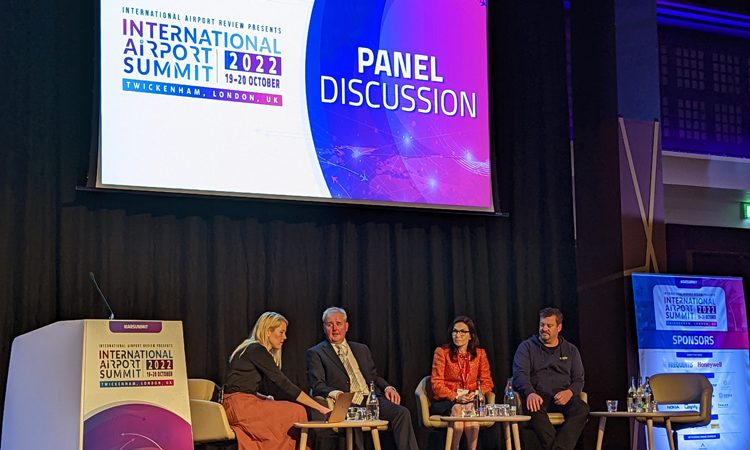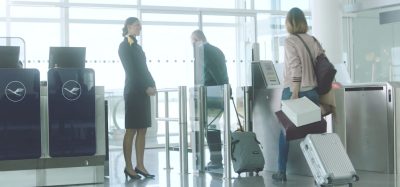A sustainable future for airports
- Like
- Digg
- Del
- Tumblr
- VKontakte
- Buffer
- Love This
- Odnoklassniki
- Meneame
- Blogger
- Amazon
- Yahoo Mail
- Gmail
- AOL
- Newsvine
- HackerNews
- Evernote
- MySpace
- Mail.ru
- Viadeo
- Line
- Comments
- Yummly
- SMS
- Viber
- Telegram
- Subscribe
- Skype
- Facebook Messenger
- Kakao
- LiveJournal
- Yammer
- Edgar
- Fintel
- Mix
- Instapaper
- Copy Link
Posted: 3 January 2023 | Claire Waghorn, Mats Berglind, Tijen Cirig, Tom Denton | No comments yet
International Airport Review’s Editorial Assistant, Lily Mae Pacey, looks back to the discussion on sustainability which took place at the International Airport Summit 2022 and provides her high level takeaways from what was a fantastic and lively discussion.


As a society, we tend to always look ahead to the future before facing the challenges that lay immediately in front of us. Sustainability has been hot on the aviation agenda, for several years, and can be interpreted in many ways; it is personal to an individual airport’s journey so far, as well as the broader scope of the entire aviation eco-system.
At the International Airport Summit 2022, esteemed panellists Claire Waghorn, Sustainable Transition Leader at Christchurch International Airport, Tom Denton, Head of Sustainability at Birmingham Airport, Tijen Cirig, Senior Director of Global Airports at Honeywell, and Mats Berglind, Digital Innovation Manager at Swedavia AB, faced sustainability head-on, as they evaluated the past, present, future and beyond of sustainable airports.
A striking statement, that was discussed from the offset, was the idea that sustainability is not just about climate and the environment. It must be embedded and integrated into every aspect, people, and prosperity. The environment is not something to be commodified and decarbonisation must elevate the needs of the future generation, including any social, equity, political, economic, and governance issues.
Employee sustainability awareness
Tom Denton is one of four within Birmingham Airport’s sustainability team. He outlined how, when it comes to sustainability within the industry, “there is no silver bullet that solves the problem for everyone, immediately.” The largest challenge the airport faces currently, is ensuring all of your employees are on the same journey as you (as an airport). Sustainability as a topic, is often likened to the mentality the industry has towards health and safety measures – it is imperative. Denton believes that airports should look at carbon management the same; “it is everybody’s responsibility, so make it simple, achievable, and exciting.” This mindset is what tends to drive fantastic ideas and innovation across airports.
Integrating sustainability must be linked to employee’s Individual Development Plans (IDPs), including employees from junior up to C-level.
Mats Berglind discussed how over a decade ago, back in 2010, Swedavia aimed to achieve zero tonne carbon emissions by 2020. The agenda and KPIs were visible to everyone across the airports and were achieved by the target date. The operator’s latest target is for five per cent of all aircraft within Swedavia, by 2025, to be utilising Sustainable Aviation Fuels (SAF). However, it is proving hard to leverage SAF due to production and cost challenges. This is where the individual’s role comes into play, “it is up to each and every one of us to interpret how sustainability fits into your own role, so ask questions early on. Innovations with a sustainable approach are inevitably more successful.”
Implementing long-term solutions and sustainable infrastructures
As an industrial software company, Honeywell has pledged to be carbon neutral by 2035, a monumental step and parallel to the goals of its customers – global airports. Tijen Cirig said that: “As humans we all need inspiration, the planet, environment, and our customers, these are our inspirations. Whatever product we put out into the world; we devise how this can be leveraged in the future so that it is not a throwaway solution.”
The environment is not something to be commodified and decarbonisation must elevate the needs of the future generation, including any social, equity, political, economic, and governance issues”
As of 2022, 38 per cent of global energy consumption comes from building and construction and 40 per cent greenhouse gas is from commercial buildings. Within buildings, 62 per cent of energy used is from heating, ventilation, air conditioning and lighting (HVAC). Although not the “sexiest” of topics, HVAC is the largest opportunity for energy consumption reduction within commercial buildings, yet not many airports have tapped into it. It provides quick, large savings and does not destruct passenger activities. Swedavia has implemented a solution that measures how many people are in an airport zone, and dependent on this they then adjust the climate system. Not only has this decreased air‑conditioning fan use by 30 per cent, but the air is also more suitable for the passengers e.g., cleaner, cooler, warmer, as well as improved fan longevity. This solution was based on evolving what is already in use across the airports.
Electrification of everything!
Pre-COVID-19-pandemic, the airport space was a different picture. Today, the conversation is being driven by electrification. There needs to be a scale-up of infrastructure to support the growth in demand for these alternate solutions. Cirig outlined how any electrification on the airside should be tied to the airport building. Airports must think like ‘smart cities’ and utilise existing and artificial intelligence (AI) solutions to avoid expensive times of day throughout parking, terminals, and airside, including runway lighting, performance taxiways, aprons, and maximising gate ground power.
Sustainable Aviation Fuel
The panel discussed how SAF is like the Blu-ray of DVD’s, it is a short-window or drop-in-fuel for the present. Therefore, airports must be adaptable and prepare for all types of solutions, again, no different to the battle between Video Home System (VHS) and Betamax back in the 1980s. Invest and prepare for both.
It is up to each and every one of us to interpret how sustainability fits into your own role, so ask questions early on. Innovations with a sustainable approach are inevitably more successful”
Although Birmingham Airport plays a smaller role in the UK’s overall carbon emission percentage, the airport has integrated a ‘Steppingstones’ initiative. Denton commented that despite the airport being, “a small part of the puzzle, we still have an instrumental part to play in delivering a solution.” For aviation to get to the end zone of zero carbon emissions, the first step is to have greater efficiency and utilise existing engine technology. The second objective is electric, most likely, short-haul aircraft. Then, the next challenge is SAF and implementing it in great volumes. The final ‘steppingstone’ is integrating hydrogen and placing the foundations for it now.
The ‘elephant in the airport’
With the uprise of forecasted passenger growth, specifically post-pandemic and the rush of passengers returning to air travel, the panellists tackled the ‘elephant in the room’. Tensions are rising within aviation and the question has been raised as to how airports can carry on their climate journey whilst handling passenger volumes. Airports must have clearer goals and should spread the focus across all areas. Queue management and baggage handling became number one over the summer season 2022, but to avoid favouritism, airports must always practice integrating climate and sustainability throughout every operation. An excellent start is opening discussions with governments to communicate what they can do to facilitate and help with the support of SAF. For example, Sweden has raised flight taxes, which is an excellent opportunity to boost business opportunities to create SAF.
To 2050 and beyond
An audience member raised the question of, can airports support and leverage sustainable public transport and routes for passengers travelling to and from the airport? Waghorn discussed the idea of “reimaging revenue streams” for airports, as passenger parking plays an enormous role in airports’ commercial revenues. Denton concluded on how not many great things came out of the pandemic, apart from the time to think. Therefore, driving airports’ performance in areas that they would have not thought of beforehand, providing the springboard into the steppingstones.
He added: “The future airport infrastructure will be entirely self-sufficient, and we need to decarbonise, decarbonise, decarbonise. It is decarbonisation that stigmatises our industry. We must provide carbon-free, global mobility travel for everybody.”
Now is the time to take sustainability, personally.
WATCH ON-DEMAND HERE
SAVE THE DATE: International Airport Summit is back 15-16 November 2023.
Issue
Related topics
Airside operations, Artificial intelligence (AI), COVID-19, Digital transformation, Emissions, New technologies, Non-aeronautical revenue, Parking, Passenger experience and seamless travel, Passenger volumes, Runways and pavements, Sustainability, Sustainable Aviation Fuel (SAF), Sustainable development, Terminal operations, Workforce
Related airports
Birmingham Airport (BHX), Christchurch International Airport (CHC)


















